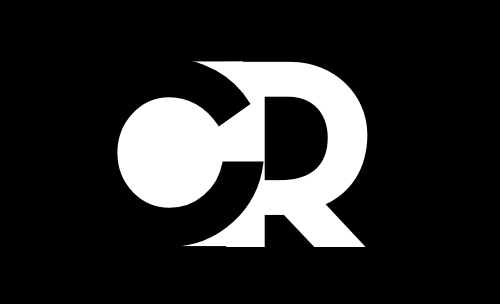How much does a $1 million term life insurance policy cost?

A $1 million term life insurance policy provides substantial coverage at an affordable price, making it a popular choice for those seeking financial security for their loved ones. But how much does it actually cost? The price depends on factors like age, health, term length, and lifestyle, with premiums typically ranging from $20 to over $200 per month. Understanding these variables can help you find the best policy for your needs without overpaying.
In this guide, we’ll break down the average costs, key factors affecting pricing, and tips to secure the most competitive rates. Whether you’re a young professional, a parent, or planning for the future, knowing what influences your premium ensures you make an informed decision. Let’s explore what goes into pricing a $1 million term life insurance policy.
(Later sections will cover:)
- Average Cost of a $1 Million Term Life Insurance Policy
- Key Factors That Influence Your Premium
- How Age Affects Term Life Insurance Rates
- Health and Lifestyle Considerations
- Choosing the Right Term Length
- Ways to Lower Your Life Insurance Costs
- Frequently Asked Questions
Average Cost of a $1 Million Term Life Insurance Policy
A $1 million term life insurance policy offers a high level of financial protection at a surprisingly affordable cost especially when you’re young and healthy. On average, premiums can range from $20 to $200+ per month, but the exact price depends on factors like age, health, term length, and the insurer you choose.
For example:
- A 30-year-old non-smoker in excellent health might pay $30–$50 per month for a 20-year term.
- A 40-year-old with good health could see rates around $60–$120 per month for the same coverage.
- By age 50, those premiums may jump to $150–$300+ per month, depending on health history.
These numbers are just estimates actual costs vary widely. Insurers assess risk differently, so shopping around is key to finding the best deal. The longer the term (e.g., 30 years vs. 10 years) and the older you are when applying, the higher your premiums will be.
Next, we’ll break down the key factors that influence your premium, so you can better predict what you’ll pay and how to save money.
Key Factors That Influence Your Premium

When insurers calculate the cost of a $1 million term life policy, they assess several key factors to determine how much risk you present. Understanding these can help you anticipate your rates—and even take steps to lower them. Here’s what matters most:
1. Age
Life insurance is cheapest when you’re young. Every year you wait, premiums increase—sometimes significantly. A 30-year-old might pay $40/month, while the same policy at 50 could cost 3-4 times more.
2. Health & Medical History
Your overall health plays a huge role. Insurers review:
- Pre-existing conditions (e.g., diabetes, heart disease)
- BMI (being overweight can raise rates)
- Family medical history (certain hereditary illnesses may affect pricing)
- Recent lab results (cholesterol, blood pressure, etc.)
3. Tobacco & Substance Use
Smokers pay 2-3 times more than non-smokers. Even occasional vaping or nicotine use can trigger higher rates. Some insurers also penalize heavy alcohol or drug use.
4. Occupation & Hobbies
High-risk jobs (e.g., logging, commercial fishing) or dangerous hobbies (e.g., skydiving, rock climbing) can increase premiums—or even lead to denial.
5. Term Length
A 20-year term is cheaper per month than a 30-year term, but the longer policy provides extended security. Choosing the right balance is key.
6. Gender
Statistically, women live longer than men, so they often get slightly lower rates for the same coverage.
7. Policy Riders & Add-Ons
Optional features (like accelerated death benefits or disability riders) add convenience but also cost.
By knowing these factors, you can apply when rates are lowest and adjust what’s within your control (like quitting smoking or losing weight before applying).
How Age Affects Term Life Insurance Rates?
Age is the single biggest factor in determining your term life insurance premium and unlike your health or habits, it’s one variable you can’t change. Insurers price policies based on mortality risk, and since the likelihood of health complications rises with age, so do your rates. Here’s how it works:
Why Younger Applicants Get the Best Rates
- In your 20s & 30s: You’re at the peak of affordability. A healthy 30-year-old can secure a $1 million, 20-year term policy for as low as $30–$50/month.
- Early 40s: Prices start climbing noticeably. At 40, the same policy might cost $60–$120/month still reasonable, but already double what it would’ve been a decade earlier.
- Late 40s to 50s: The jump becomes steep. By 50, expect to pay $150–$300/month for a 20-year term.
The Cost of Waiting: A Real Example
Let’s say you’re considering a $1 million, 20-year term policy:
- At age 30: ~$35/month
- At age 40: ~$85/month
- At age 50: ~$225/month
Waiting just 10 years could mean paying 2–6x more for the same coverage.
Why Locking in Early Matters
- Your rate stays fixed for the entire term. If you buy at 35, you’ll pay the same amount until 55 even as your health changes.
- Future health issues won’t disqualify you. If you develop a condition like diabetes at 45, a policy bought at 30 remains intact.
- Renewal is expensive. Once your term ends, renewing (or buying new coverage) means paying much higher age-based rates.
The Sweet Spot for Buying
The ideal window is typically between 25–40, when premiums are lowest and you’re likely still in good health. But even if you’re older, coverage can still be affordable you may just need to adjust the term length or amount.
Health and Lifestyle Considerations
When applying for a $1 million term life insurance policy, your health and daily habits are under the microscope. Insurers don’t just guess your risk—they meticulously evaluate your medical history, current health, and even how you spend your free time. Here’s what they look for, and how it impacts your rates:
Medical Underwriting: The Health Exam Deep Dive
Most insurers require a medical exam (unless you opt for no-exam policies, which cost more). They’ll check:
- Blood pressure & cholesterol (high levels suggest cardiovascular risk)
- Blood/urine tests (for glucose, nicotine, drugs, or chronic conditions)
- BMI (a measure of weight-to-height; obesity often means higher premiums)
- Prescription history (ongoing meds for anxiety, diabetes, etc., may raise flags)
Pro Tip: Schedule your exam in the morning, fast beforehand, and avoid alcohol or intense workouts 24 hours prior—these can skew results.
Pre-Existing Conditions: Not Always a Dealbreaker
Conditions like diabetes, heart disease, or cancer don’t automatically disqualify you, but they’ll likely increase costs. For example:
- Controlled Type 2 diabetes might add 20–50% to your premium.
- A past cancer remission could mean higher rates or a waiting period.
Fun fact: Some insurers specialize in high-risk cases shopping around is key.
Tobacco & Nicotine Use: The Pricey Habit
- Smokers pay 2–3x more than non-smokers. A $50/month policy becomes $150+.
- Vaping or chewing tobacco? Most insurers treat it the same as cigarettes.
- “Occasional” smokers beware: Even social smoking can land you in the “tobacco user” category.
Good news: If you quit, you can often reapply for lower rates after 1–5 years (varies by insurer).
Risky Hobbies & Jobs: Adventure Comes at a Cost
Love skydiving, rock climbing, or racing cars? Insurers may:
- Add a “flat extra” fee (e.g., $5/month for scuba diving).
- Exclude death from high-risk activities.
- Deny coverage entirely for extreme sports like BASE jumping.
High-risk jobs (e.g., pilots, firefighters) face similar scrutiny but may qualify for occupational discounts.
Alcohol & Drug Use: The Fine Print
- Heavy drinking (2+ drinks daily) can spike rates.
- DUIs on your record may require waiting periods or higher premiums.
- Recreational drug use (even marijuana in some states) often leads to declines.
Mental Health History
Conditions like depression or anxiety may raise rates if they’re severe or require hospitalization. But stable, managed cases with therapy/meds? Less impact.
How to Improve Your Profile
- Quit nicotine at least a year before applying.
- Lose weight if your BMI is borderline.
- Control chronic conditions with meds and doctor visits.
- Avoid risky activities before/during underwriting.
Choosing the Right Term Length

Selecting the proper term length for your $1 million life insurance policy is like choosing the right-sized safety net – it needs to cover your risk period completely without overpaying for unnecessary years. Here’s how to make this critical decision:
Understanding Term Length Options
Most insurers offer terms ranging from 10 to 30 years, with 20 years being the most popular choice. Each option serves different life stages:
- 10-Year Term: Best for short-term needs like covering a business loan or bridge period until other assets mature
- 20-Year Term: Ideal for parents covering children’s upbringing or paying off a mortgage
- 30-Year Term: Perfect for young families wanting coverage through child-rearing and into empty nest years
The Goldilocks Principle: Not Too Short, Not Too Long
Finding your “just right” term requires considering:
- Major Financial Obligations:
- Will your mortgage be paid off in 15 or 30 years?
- When will your children finish college?
- Income Replacement Needs:
- How many working years remain until retirement?
- Does your spouse/partner rely on your income long-term?
- Future Insurability:
- Could health changes make renewing difficult?
- Are you planning high-risk activities in coming years?
Cost Comparison Across Terms
While longer terms cost more monthly, they offer better value over time:
| Age | 10-Year Term | 20-Year Term | 30-Year Term |
|---|---|---|---|
| 30 | $25/month | $35/month | $55/month |
| 40 | $40/month | $85/month | $135/month |
| 50 | $90/month | $225/month | $350/month |
Sample rates for healthy non-smokers – longer terms cost more annually but lock in youth-based rates
Strategic Layering Option
Some policyholders combine terms (e.g., $500k 20-year + $500k 30-year) to:
- Cover immediate needs more affordably
- Maintain some protection as circumstances change
- Phase out coverage as financial independence grows
Pro Tip: If you’re between standard term lengths, round up rather than down. That extra 5 years of coverage could be critical during life transitions.
Ways to Lower Your Life Insurance Costs
Getting a $1 million term life insurance policy doesn’t have to break the bank. With these practical strategies, you can secure robust protection while keeping premiums manageable:
1. Buy Young (But Only When You Need It)
- Locking in rates in your 20s or 30s can save 60-70% compared to waiting until your 40s
- But don’t purchase prematurely – only buy when you have actual dependents or debt obligations
2. Optimize Your Health Before Applying
- 6-12 months before applying:
- Quit nicotine completely (requires 1+ year for best rates)
- Lower BMI through diet/exercise
- Control blood pressure and cholesterol
- Resolve any correctable health issues
3. Choose the Right Term Length
- Select the shortest term that covers your needs (e.g., 20 years instead of 30 if kids will be independent sooner)
- Consider “laddering” multiple policies with different terms
4. Shop Around Strategically
- Compare at least 5-6 insurers – rates can vary by 50%+ for identical coverage
- Work with an independent broker who can access multiple carriers
- Check insurer financial ratings (AM Best A+ or better)
5. Take Advantage of Discounts
- Preferred health discounts (for excellent vitals)
- Non-smoker discounts
- Multi-policy discounts (when bundling with other insurance)
- Annual payment discounts (vs monthly)
6. Consider Policy Structure Options
- Annual renewable term: Starts cheaper but increases yearly
- Return of premium: More expensive but refunds premiums if you outlive the term
- Group insurance: Often cheaper through employers or associations
7. Adjust Coverage Over Time
- Start with higher coverage when needs are greatest, then reduce as:
- Mortgage decreases
- Kids become independent
- Retirement savings grow
Pro Tip: Re-evaluate your policy every 3-5 years. You may qualify for better rates if your health improves or new products enter the market.
frequently asked questions
1. Is a $1 million policy enough coverage?
It depends on your financial obligations. A good rule of thumb is 10-15x your annual income, plus enough to cover debts (mortgage, loans) and future expenses (college tuition). For high earners or those with substantial assets, $1 million may be sufficient, but others might need more.
2. Can I get a $1 million policy with no medical exam?
Yes, but expect to pay 20-50% more. “No-exam” or accelerated underwriting policies are convenient but costlier because insurers take on more risk. Traditional medical underwriting usually offers the best rates.
3. What if I outlive my term policy?
Term insurance has no cash value if you outlive the term, coverage ends. You can:
Renew (but at much higher age-based rates)
Convert to permanent insurance (if your policy allows)
Apply for a new policy (if still insurable)
4. How do insurers verify my health information?
They typically:
Review your medical records (with your consent)
Check prescription drug history
Pull MIB (Medical Information Bureau) reports (a database of previous insurance applications)
Sometimes contact your physician for records
5. Does term life insurance cover suicide?
Most policies have a suicide clause (usually 1-2 years). If death by suicide occurs during this period, the insurer typically refunds premiums but doesn’t pay the death benefit. After the exclusion period, coverage applies.
Final Thoughts
A $1 million term life insurance policy offers substantial financial security at an affordable price especially when you secure it while young and healthy. By understanding how age, health, lifestyle, and term length affect your premiums, you can make informed decisions to lock in the best possible rates. Remember, life insurance isn’t just about price; it’s about ensuring your loved ones are protected when they need it most. Whether you’re starting a family, paying off a mortgage, or planning for the unexpected, the right term policy provides peace of mind without straining your budget. Take the next step by comparing quotes, optimizing your health profile, and choosing coverage that aligns with your long-term financial goals. The best time to act is now because protecting your family’s future is priceless.




![Carx Street Guide [Tips for Beginners to Dominate Streets]](https://downloadcarxstreet.com/wp-content/uploads/2024/06/Carx-Street-Guide-Tips-for-Beginners-to-Dominate-Streets-768x480.webp)

